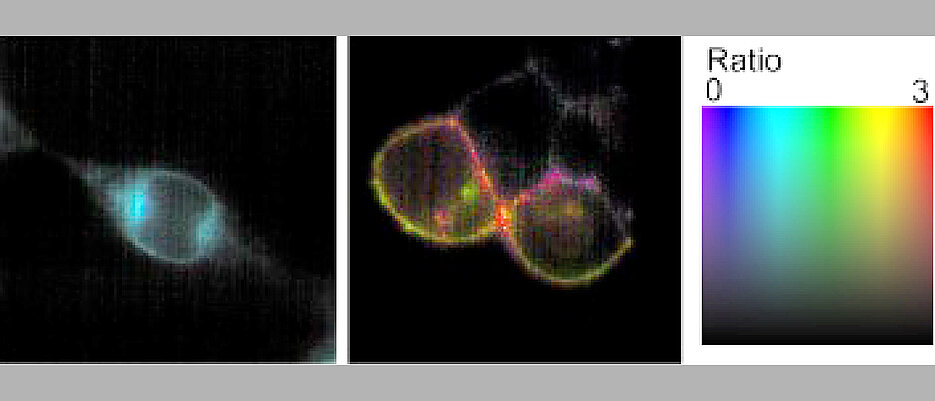How Immune Cells Recognize their Enemies
12/08/2023In order for immune cells to do their job, they need to know against whom they should direct their attack. Research teams at the University of Würzburg have identified new details in this process.

As complicated as their name is, they are important for the human organism in the fight against pathogens and cancer: Vγ9Vδ2 T cells are part of the immune system and, as a subgroup of white blood cells, fight tumor cells and cells infected with pathogens. They recognize their potential victims by their altered cell metabolism.
Research teams from the University of Würzburg and the University Hospital of Würzburg, together with groups in Hamburg, Freiburg, Great Britain and the USA, have now gained new insights into how these cells manage to look inside the cell. Thomas Herrmann, Professor of Immunogenetics at the Institute of Virology and Immunobiology and his colleague Dr. Mohindar Karunakaran at Julius-Maximilians-Universität Würzburg (JMU), were responsible for the study published in the journal Nature Communications.
Crucial for the Control of Infections and Tumors
"Around one to five percent of lymphocytes, a subgroup of white blood cells in the human body, are so-called Vγ9Vδ2 T cells. However, these multiply massively under certain circumstances," says Thomas Herrmann, explaining the background to the research project.
"Certain circumstances" in this case means that the T cells encounter so-called phosphoantigens, metabolic products of pathogens, which can also accumulate spontaneously in tumor cells or after drug-based cancer therapy. "Vγ9Vδ2 T cells are therefore crucial for the control of infections and tumors," explains Herrmann.
Receptors Give the Signal to Kill
As the scientists discovered, phosphoantigens bind to a special group of molecules inside the cell, the so-called BTN3A1 molecules, with which they then form molecular complexes. "These complexes are recognized by receptors on the surface of the Vγ9Vδ2 T cells, which gives the cell the signal to kill," says the immunogeneticist. However, it turned out that relatives of the BTN3A1 molecules that do not bind phosphoantigens are also required to trigger these signals.
Which areas of the molecules involved react with each other and which areas are not necessary for this: The research groups have now identified further details on this. "These findings can improve the clinical use of Vγ9Vδ2 T cells in the fight against tumors," explains Herrmann. On this basis, it is conceivable, for example, to develop drugs that strengthen this interaction. However, further analyses of the interaction between the BTN molecules and the receptors of the Vγ9Vδ2 T cells are still required.
Some BTN Molecules Prevent Infections
However, the BTN molecules are also interesting from another point of view: "Some forms of the BTN3 molecules prevent human cells from becoming infected with the bird flu virus, for example," says Herrmann. And the BTN3A1 molecule suppresses the fight against tumors by so-called conventional T lymphocytes.
In future studies, the scientists therefore now want to investigate whether these different functions are mediated by the same areas of the BTN molecules and whether certain properties of these molecules can be specifically enhanced or suppressed.
Original Publication
A distinct topology of BTN3A IgV and B30.2 domains controlled by juxtamembrane regions favors optimal human γδ T cell phosphoantigen sensing. Mohindar M Karunakaran, Hariharan Subramanian, Yiming Jin, Fiyaz Mohammed, Brigitte Kimmel, Claudia Juraske, Lisa Starick, Anna Nöhren, Nora Länder, Carrie R Willcox, Rohit Singh, Wolfgang W Schamel, Viacheslav O Nikolaev, Volker Kunzmann, Andrew J Wiemer, Benjamin E Willcox, Thomas Herrmann. Nat Commun. 2023 Nov 22;14(1):7617. doi: 10.1038/s41467-023-41938-8.
Contact
Prof. Dr. Thomas Herrmann, University of Würzburg, Institute for Virology and Immunobiology, T: +49 931 31-81538, E-Mail: thomas.herrmann@uni-wuerzburg.de






